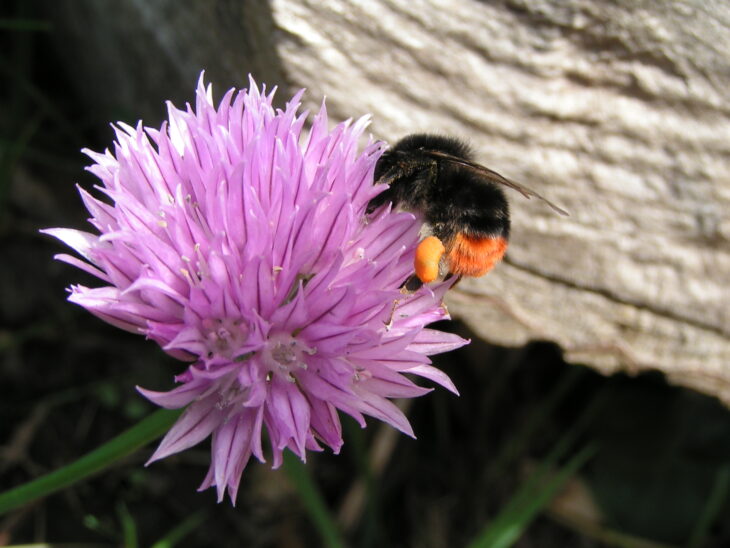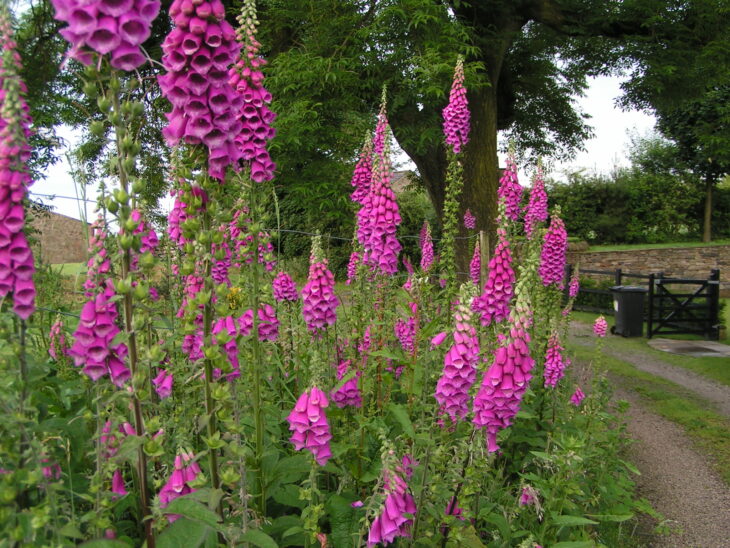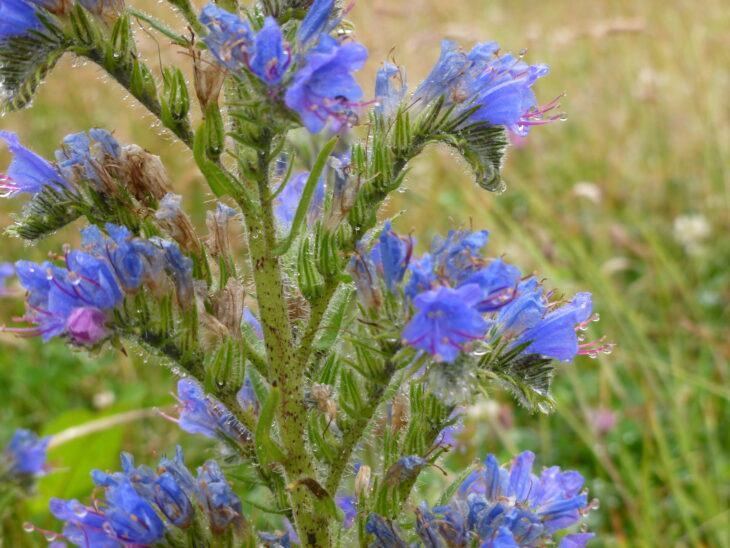Give bumblebees a boost by planting some of their favourites in your garden!
Due to differences in size, weight and tongue-length, different species of bee require different types of flowers. Bumblebees with shorter tongues need short, open flowers with easy-to-reach nectar. This includes flowers from the daisy family and those like alliums, which have a number of small flowers on one stalk. This type of flower offers a small reward for each probe, but longer-tongued bees are able to access deeper flowers, which have significantly more nectar per flower.
Some bee species have even resorted to ‘robbing’ the nectar by cutting a hole in the base of a flower and getting to the nectar that way. Read our blog on nectar robbers.

Some bumblebee flower favourites
- Buff-tailed and white-tailed bumblebees prefer short open flowers such as white clover and comfrey. Both are hole-biting ‘nectar robbers’. Buff-tailed bumblebees rarely visits pendulous flowers because their large size means that they are not agile enough to do so.
- Garden bumblebees have a long tongue so they can visit flowers with petals that form long tubes such as honeysuckle, delphiniums and catmint.
- Red-tailed bumblebees show a preference to landing on flowers with ’platforms’ that can accomodate their large size such as those in the daisy family, especially knapweeds.
- Early bumblebees are small and agile with medium-length tongues meaning they can probe a range of flower depths and are able to visit upside-down and drooping flowers such as comfrey and viper’s bugloss.
- Common carder bees are long-tongued and are able to get nectar from long-tubed flowers, especially the late flowers of white dead-nettle, but also visits a wide variety of other flowers. Male bees of this species seem to visit compound daisy-like flowers (e.g marsh thistle) more than females.
As with any planting for nectar, having some early and late flowers in the mix will prolong the nectar season for bumblebees. Planting them in drifts will help bees recognise them and allows them to visit repeatedly.

30 plant species that bees go wild for…
- Agastache (Agastache spp.)
- Betony (Stachys officianlis)
- Borage (Borago officianalis)
- Broad bean (Vicia faba)
- Buddleia (Buddleia davidii)
- Bugle (Ajuga reptans)
- Catmint (Nepeta spp.)
- Chives (Allium schoenoprasum)
- Clovers (Trifolium spp.)
- Comfrey (Spymphytum officianale)
- Cranesbill (Geranium spp.)
- Curry plant (Helichrysum angustifolium)
- Figwort (Scrophularia nodosa)
- Foxglove (Digitalis purpurea)
- Honeysuckle (Lonicera spp.)
- Heather (Calluna spp., Erica spp.)
- Knapweed (Centaurea spp.)
- Lavender (Avandula angustifolia)
- Marjoram (Origanum vulgare)
- Mints (Mentha spp.)
- Nasturium (Tropaeolum majus)
- Poached egg plant (Limnanthes douglasii)
- Rosemary (Rosmarinus officianalis)
- Sage (Salvia officianalis)
- Larkspur (Delphinium spp.)
- Snapdragon (Antirrhinum spp.)
- Thistles (Cirsium spp.)
- Toadflax (Linaria vulgaris)
- Verbascum (Verbascum spp.)
- Viper’s bugloss (Echium vulgare)
- Woundworts (Stachys arvensis)

